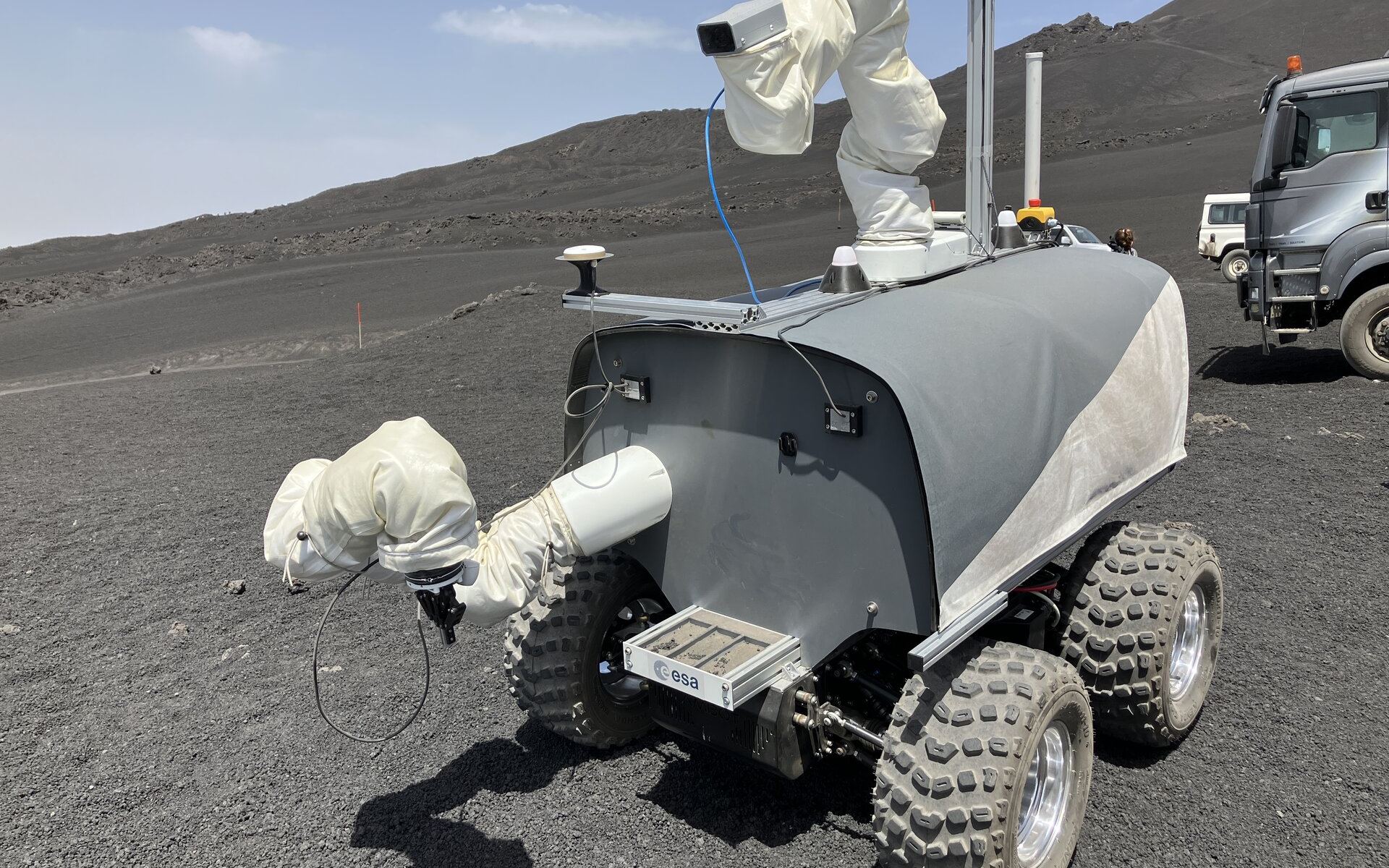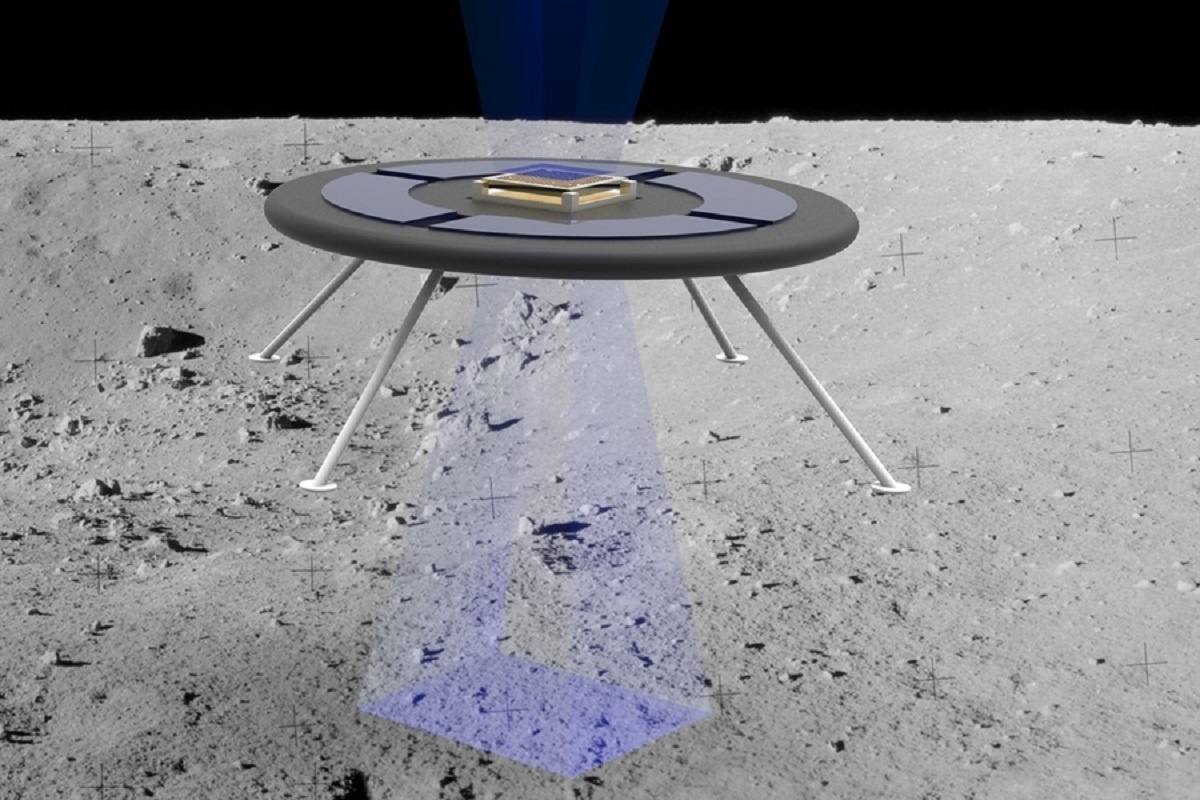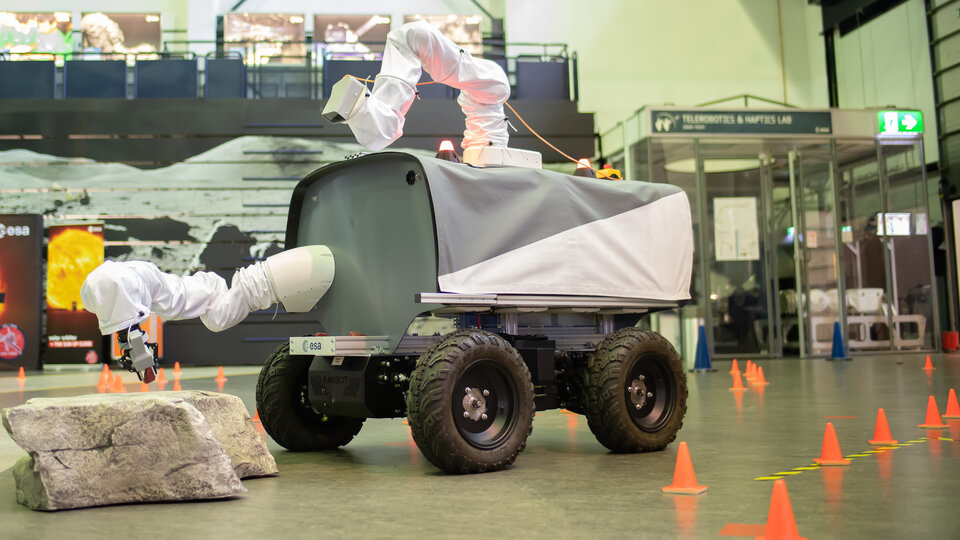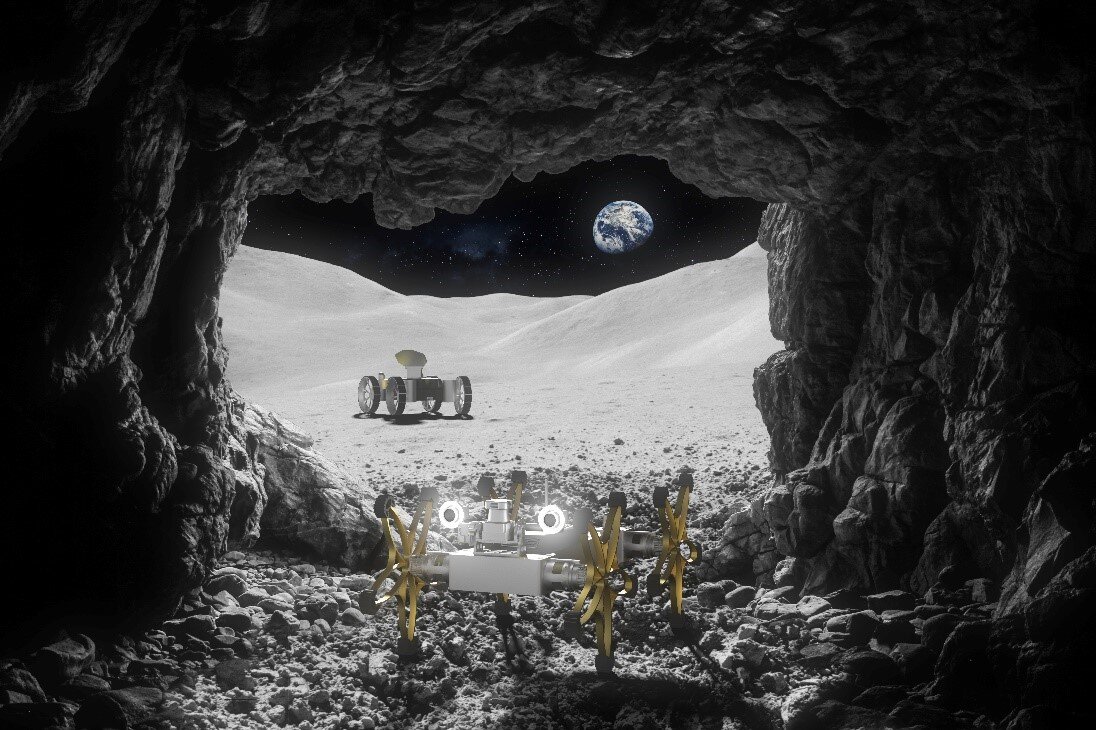Lunar exploration has been gaining more and more traction from various sources recently. Every step forward is another towards potentially having a permanent human presence on another solar system body. ESA took another step recently with the completion of its Analog-1 robotics test, which took place successfully on the slopes of Mt Etna earlier this month.
Continue reading “An Astronaut Controlled a Rover as it Collected Samples on Mt Etna. In the Future, it’ll be on the Moon”We’ll be Building Self-Replicating Probes to Explore the Milky Way Sooner Than you Think. Why Haven’t ETIs?
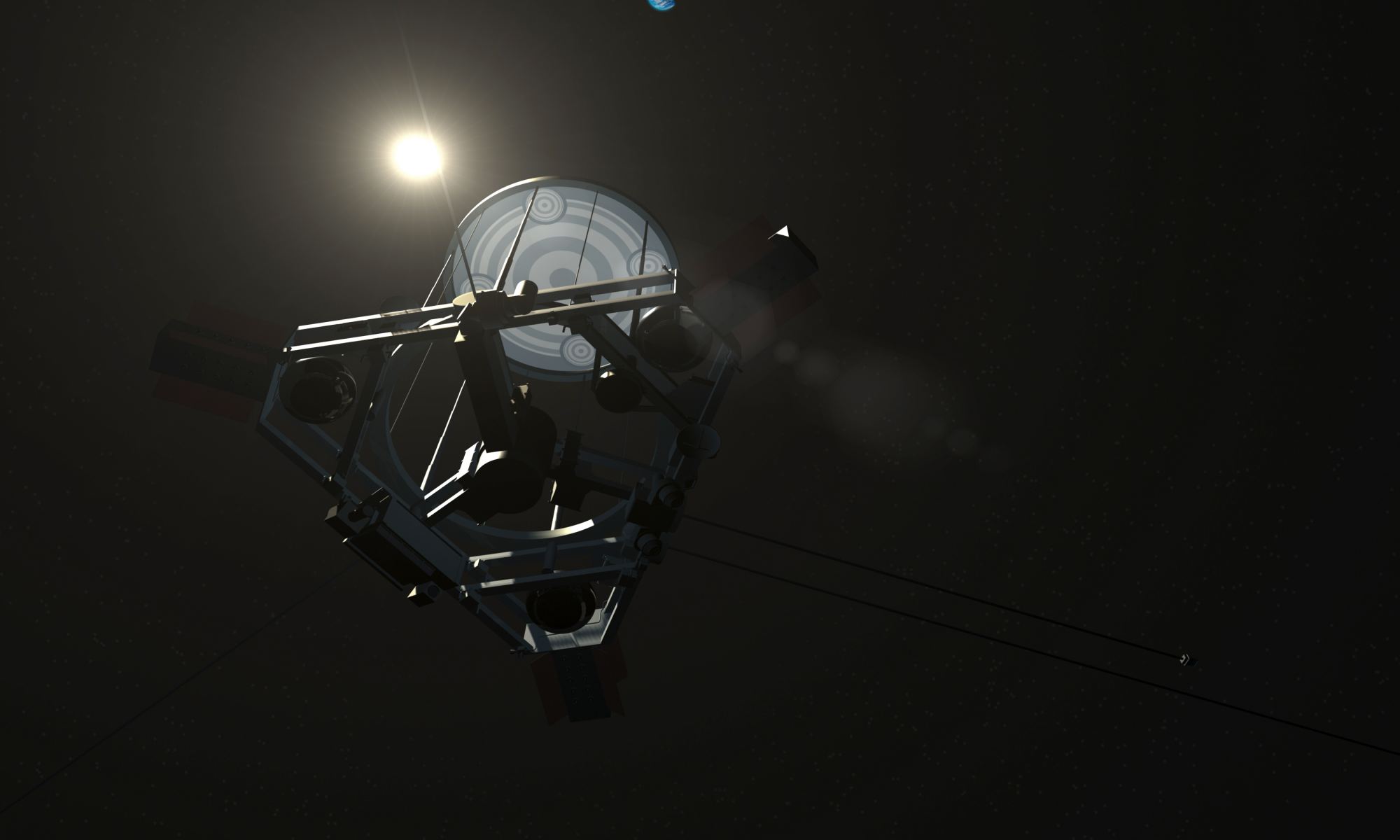
The future can arrive in sudden bursts. What seems a long way off can suddenly jump into view, especially when technology is involved. That might be true of self-replicating machines. Will we combine 3D printing with in-situ resource utilization to build self-replicating space probes?
One aerospace engineer with expertise in space robotics thinks it could happen sooner rather than later. And that has implications for SETI.
Continue reading “We’ll be Building Self-Replicating Probes to Explore the Milky Way Sooner Than you Think. Why Haven’t ETIs?”The Surface of the Moon is Electrically Charged, Which Could Allow a Hovering Robot to Explore it
Let’s not sugarcoat it. Exploring the Moon is not for the faint of heart! It’s an airless body, which means there is no atmosphere, the surface temperatures are extreme, and there’s lots of radiation. The low gravity also means you can never really walk on the surface and have to bounce around in a bulky spacesuit until you fall over. And you can bet your bottom dollar people will make a supercut of the footage someday (see below). Then there’s that awful moondust (aka. lunar regolith), which is electrostatically charged and sticks to EVERYTHING!
Looking to take advantage of this, researchers from the Massachusetts Institute of Technology (MIT) began testing a new concept for a hovering rover that harnesses the Moon’s natural charge to levitate across the surface. On the Moon, this surface charge is strong enough to levitate moon dust more than 1 meter (3.3 ft) above the surface. With support from NASA, this research could lead to a new type of robotic exploration vehicle that will help astronauts explore the Moon in the coming years.
Continue reading “The Surface of the Moon is Electrically Charged, Which Could Allow a Hovering Robot to Explore it”Dozens of Robots Competed to Race Through Underground Caves
America’s Defense Advanced Research Projects Agency (DARPA) is well known for its challenges. It held a series of autonomous driving competitions back in the early 2000s that directly led to today’s self-driving cars. Now that Grand Challenge has evolved into a new one – the Subterranean (SubT) challenge, which took place last week. This new one also happens to be directly applicable to technologies that would be useful in space exploration.
Continue reading “Dozens of Robots Competed to Race Through Underground Caves”New Drones for Exploring Mars are Getting Tested in Iceland

It’s looking more and more like the future of space exploration could involve drones in a big way.
We’ve already seen it here on Earth, where all kinds of flying drones are used by all kinds of people for all kinds of things. Drones are particularly useful in resource development, exploration, imaging, and remote sensing.
Could the future see drones flying around in the thin Martian atmosphere?
Continue reading “New Drones for Exploring Mars are Getting Tested in Iceland”A Robot Made of Ice Could Adapt and Repair Itself on Other Worlds

Some of the most tantalizing targets in space exploration are frozen ice worlds. Take Jupiter’s moon Europa for instance. Its warm salty subsurface ocean is buried under a moon-wide sheet of ice. What’s the best way to explore it?
Maybe an ice robot could play a role.
Continue reading “A Robot Made of Ice Could Adapt and Repair Itself on Other Worlds”Operating a Rover in Real-time From a Distance
There are instances other than pandemics when it is necessary to work remotely. Spacecraft operators are forced to do most of their work remotely while their charges travel throughout the solar system. Sometimes those travels take place a little closer to home. Engineers at DLR, Germany’s space agency, recently got to take the concept of remote working to a whole new level when they operated a rover in a whole different country almost 700 kilometers away while working remotely from their primary office.
Continue reading “Operating a Rover in Real-time From a Distance”Chinese Asteroid Mining Robot Due to Launch in November

Does it seem like science is catching up with science fiction? Sometimes it does. Especially when there’s an announcement like this one.
A Chinese company says that they’ll be launching an asteroid-mining robot by November.
Continue reading “Chinese Asteroid Mining Robot Due to Launch in November”An Upcoming Mission is Going to Assemble and Manufacture a Communications Antenna and Beam in Space
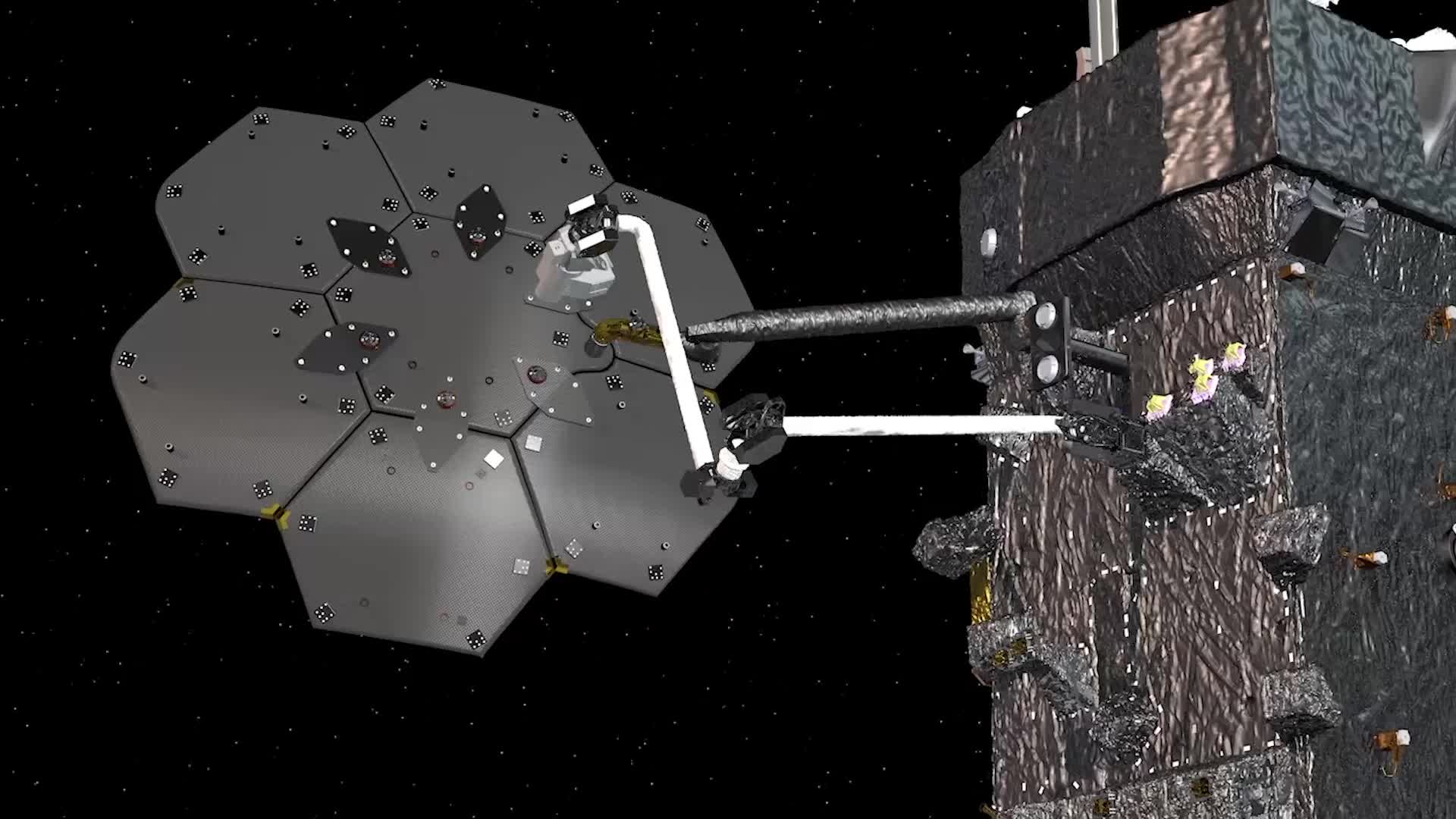
It has been suggested that if humanity wants to truly embark on a renewed era of space exploration, one of the key ingredients is the ability to manufacture structures in space. By assembling everything from satellites to spacecraft in orbit, we would eliminate the most costly aspect of going to space. This, simply put, is the sheer expense of escaping Earth’s gravity well, which requires heavy launch vehicles and LOTS of fuel!
This is the idea behind the Space Infrastructure Dexterous Robot (SPIDER), a technology-demonstrator that will be going to space as part of NASA’s Restore-L spacecraft, which is designed to service and refuel a satellite in low-Earth orbit. Once deployed, the SPIDER will assemble a communications antenna and composite beam to demonstrate that space-based construction is possible.
Read moreESA is Going to Test Two Rovers Working Together to Explore the Moon
The ESA has spent the past few years working towards the creation of an international lunar base, something that will serve as a spiritual successor to the International Space Station (ISS). To accomplish this, they have enlisted the help of other space agencies and contractors to develop concepts for space habitats and construction methods as well as ways to provide robotic and logistical support.
Recently, the ESA’s Technology Development Element (TDE) signed on with the French technology developer COMEX to create the TRAILER robotic system. This two-year project will test a new mission architecture where two rovers work in tandem (and with the help of astronauts) for the sake of exploring the lunar surface and building a permanent outpost on the Moon.
Continue reading “ESA is Going to Test Two Rovers Working Together to Explore the Moon”
